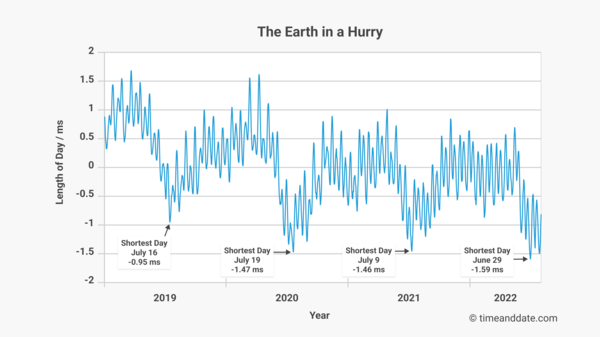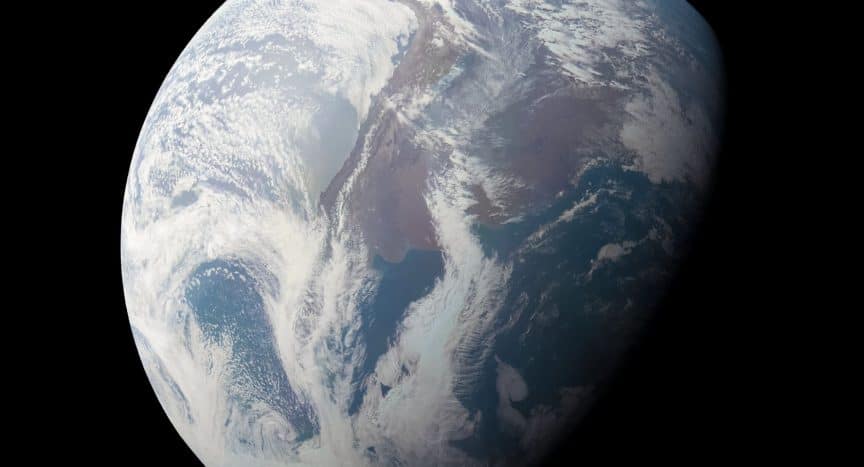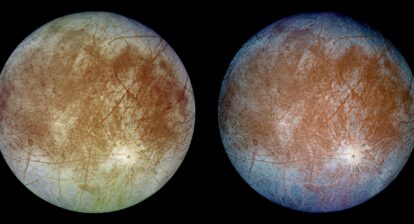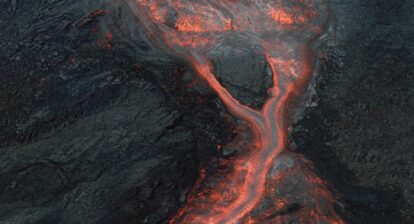Shortest Day of Atomic-Clock Era
Earth has recorded its shortest day since scientists began using atomic clocks to measure its rotational speed.
On June 29, 2022, Earth completed one spin in 1.59 milliseconds less than 24 hours. This is the latest in a series of speed records for Earth since 2020.
Earth’s Fluctuating Spin
Earth spins once every 24 hours with respect to the Sun—this is why the Sun appears to rise and set every day.
In general, over long periods, Earth’s spin is slowing. Every century, Earth takes a couple of milliseconds or so longer to complete one rotation (where 1 millisecond equals 0.001 seconds).
Within this general pattern, however, the speed of Earth’s spin fluctuates. From one day to the next, the time Earth takes to complete one rotation goes up or down by a fraction of a millisecond.
Length of Day
Scientists who study Earth’s rotation use the term ‘length of day’ to talk about how slow or fast Earth is spinning.
The length of day is the difference between the time it takes Earth to rotate once on its axis, and 86,400 seconds (which is 24 hours).
When the length of day is rising, Earth is spinning more slowly. When it is decreasing and becomes a negative number, Earth is spinning more quickly.
Earth in a Hurry
In recent years, Earth has been speeding up. In 2020, timeanddate reported that Earth had achieved its 28 shortest days since accurate daily measurements using atomic clocks began in the 1960s.
The shortest day of all in 2020 was -1.47 milliseconds on July 19.
Earth continued to spin quickly in 2021, although the shortest day of the year in 2021 was fractionally longer than in 2020.
Now, in 2022, things have speeded up again. On June 29, Earth set a new record for the shortest day of the atomic-clock era: -1.59 milliseconds.
Earth nearly beat its record again the following month, posting a length of day of -1.50 milliseconds on July 26.
New Record
The following chart shows how the length of day has fluctuated in recent years. The data is provided by the International Earth Rotation and Reference Systems Service (IERS).

Heading downward: 2022 has seen the shortest day ever recorded since atomic clocks were invented.
©timeanddate
The narrow, jagged spikes in the chart are a result of the Moon’s monthly orbit around Earth. The longer, smoother waves—with the shortest days coming in or around July each year—are related to movements in Earth’s atmosphere.
Why Is This Happening?
What is causing the current downward trend in the length of the shortest day?
It could be related to processes in Earth’s inner or outer layers, oceans, tides, or even climate. Scientists are not sure, and struggle to make predictions about the length of day more than a year ahead. But there are tentative ideas.
At next week’s annual meeting of the Asia Oceania Geosciences Society (presentation SE05_A009), Leonid Zotov—together with his colleagues Christian Bizouard and Nikolay Sidorenkov—will suggest the current decrease in the length of day could have some relation to the ‘Chandler wobble’.
Chandler wobble is the name given to a small, irregular movement of Earth’s geographical poles across the surface of the globe.
“The normal amplitude of the Chandler wobble is about three to four meters at Earth’s surface,” Dr Zotov told timeanddate, “but from 2017 to 2020 it disappeared.”
Toward a Negative Leap Second?
If Earth’s fast rotation continues, it could lead to the introduction of the first-ever negative leap second.
This would be required to keep civil time—which is based on the super-steady beat of atomic clocks—in step with solar time, which is based on the movement of the Sun across the sky.
A negative leap second would mean that our clocks skip one second, which could potentially create problems for IT systems.
What Happens Next?
Will the length of day continue to decrease, or have we already reached the minimum? Nobody knows for sure, but we asked Dr Zotov for his best guess.
“I think there’s a 70 percent chance we’re at the minimum,” he said, “and we won’t need a negative leap second.”
This article was first published at timeanddate.com. Read it here.







